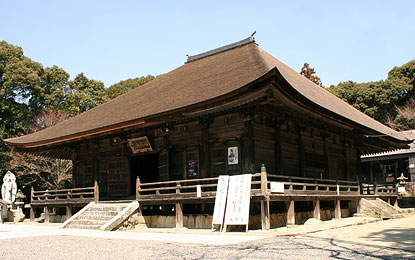|
||
 |
||

Takisanji Hondou êR{° (Aichi)
@
(C)2001 Japanese Architecture and Art Net Users System.@No reproduction or republication without written permission.
fÚÌeLXgEÊ^ECXgÈÇASÄÌRec̳f¡»E]ÚðֶܷB
|
||||||
| @ | ||||||
| yosemune yane@ñ®ª | ||||||
| KEY WORD :@architecture / general terms | ||||||
| @ | ||||||
| Also abbreviated to yosemune ñ, also called yotsuyane l®ª. A hipped roof. A the roof that descends from the ridge on four sides of a rectangular building. Therefore, hip rafters *sumigi ÷Ø, descend from each end of the ridge to the corners. The length of the ridge influences the angles made when the hip rafter bisects the corners. If the corner is bisected so that two 45 degree angles are created, the term used is masumi ^÷. If the corner is bisected to form unequal angles, it is called furezumi U÷ (see *sumigi-no-fure ÷ØÌU). When hip roofs were constructed over square buildings and occasionally over buildings where the depth was greater than the length, the length of the ridge was adjusted so that the exposed part of the hip rafter can bisect the corner at 45 degree. The structural members used to make a hip roof are simpler if there is no hidden roof *noyane 쮪. However, a much larger roof with sharper incline can be achieved if the building includes the hidden roof structure. Examples: Toushoudaiji *Kondou µñà° (8c) in Nara; Daizenji Hondou åP{° (1286) in Yamanashi prefecture. | ||||||
| @ | ||||||
 Takisanji Hondou êR{° (Aichi)
|
||||||
@ |
||||||
| REFERENCES: | ||||||
| *yosemune-zukuri ñ¢ | ||||||
| EXTERNAL LINKS: | ||||||
| @@ | ||||||
| NOTES: | ||||||
| @ | ||||||
(C)2001 Japanese Architecture and Art Net Users System.@No reproduction or republication without written permission. fÚÌeLXgEÊ^ECXgÈÇASÄÌRec̳f¡»E]ÚðֶܷB |
||||||
| @ |